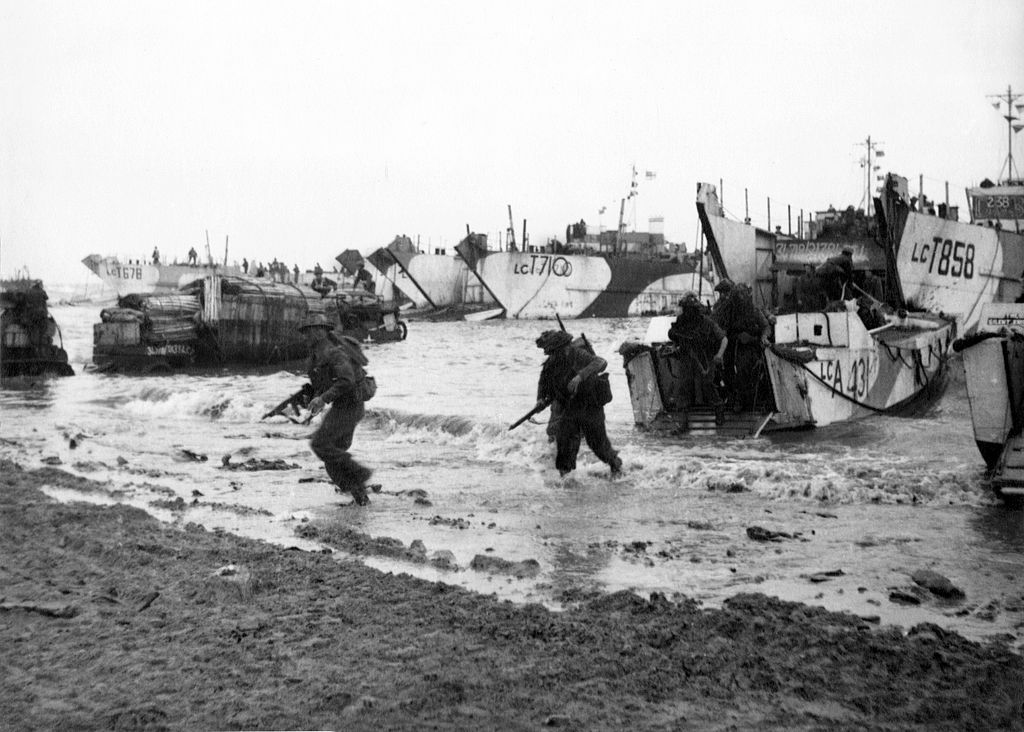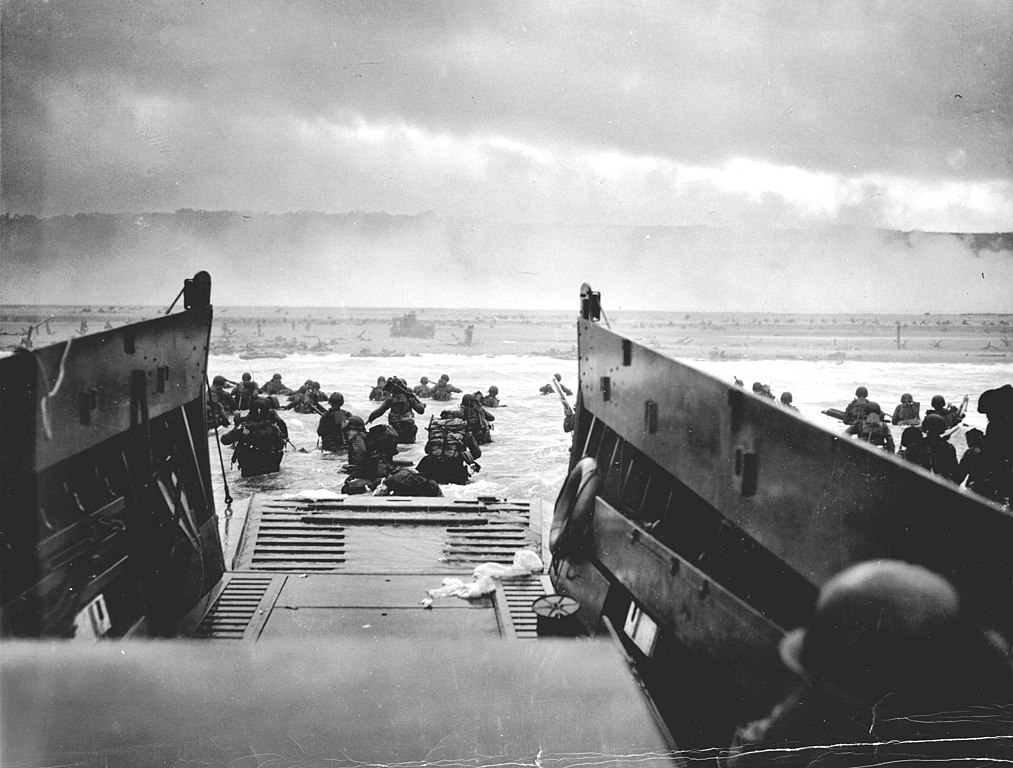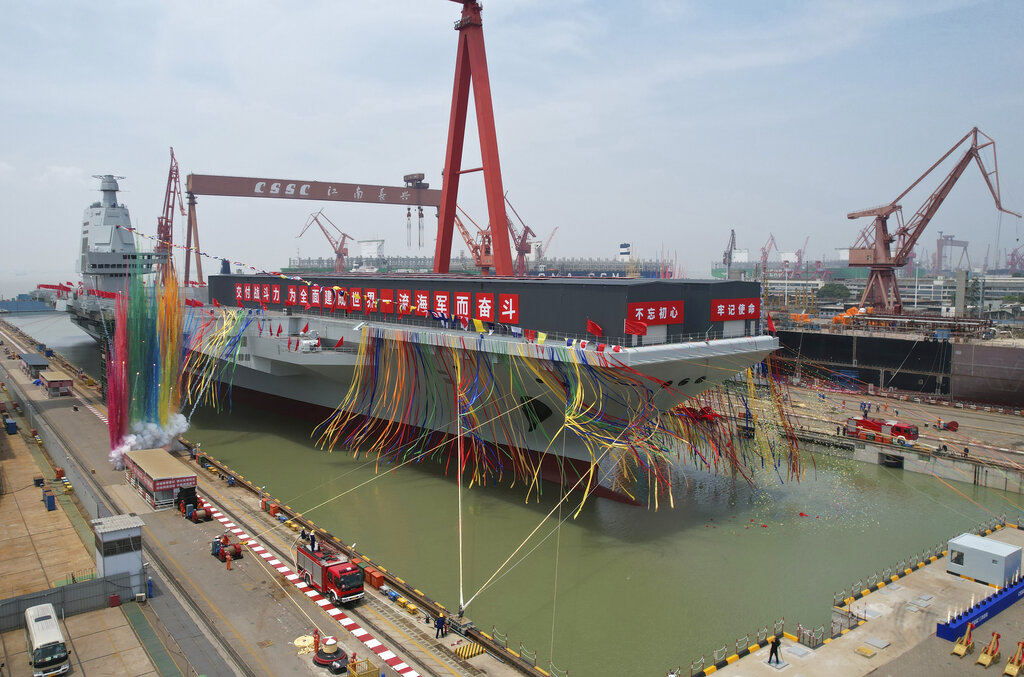
This article was originally published on NY Sun - National. You can read the original article HERE
On the 80th anniversary of D-Day, military analysts tell the Sun, the overlooked lesson for today from the success of the amphibious landing in Nazi-occupied France is the overwhelming advantage America had then in terms of ships and other war matériel.
American success on the beaches of Normandy was made possible by the power of America’s industrial base and the ability to scale up mobilization. The D-Day landing required more than 7,000 naval vessels, including 4,000 landing craft and 1,200 warships.
At a time of looming military threats 80 years later, these analysts warn that America’s defense industrial base has been hollowed out, leaving the nation and its allies vulnerable to the predations of global rivals like the rising industrial power, Communist China.
“Strategically, we are not in the 1940s, we are in the 1930s,” a senior fellow at the Foundation for Defense of Democracies, Mark Montgomery, tells the Sun. In the Pacific, this is the time before the war, the time to prepare for a major event.
“We are nowhere near the defense industrial base mobilization we were at in the 1930s,” says Mr. Montgomery, who served as director of Pacific operations in the Navy with the rank of rear admiral.

America must “incentivize industry to produce more, in the way FDR in 1941 gave up on central planning and turned over the war economy to private enterprise,” a military historian and senior fellow at the Hoover Institution, Victor Davis Hanson, tells the Sun.
Today, the American fleet in the Pacific consists of less than 300 ships — and domestic shipyards are shrinking. It is time to build “a vast fleet of drone ships and subs, drone missiles and planes, and start organizing our allies,” says Mr. Hanson.
Communist China, meanwhile, has been ramping up shipbuilding operations for years, expecting to reach almost 400 ships by the end of the year.
This allows China to implement its “boiling frog” strategy of gradually becoming more aggressive militarily, according to a retired commander of American forces in the Indo-Pacific, Admiral John Aquilino.
America can raise its military preparedness by mobilizing production and simultaneously lower the likelihood of an invasion of Free China by raising the risks of an amphibious assault or port capture.
Cross channel invasions are inherently dangerous, as the Allied forces discovered in 1944. To help deter an invasion of Taiwan, America can take advantage of the 100 miles of water which Communist China would have to cross. “Technology has narrowed the gap,” says Mr. Montgomery, but the strait still presents “great exposure.”

War with Communist China has the potential to cause casualties on a scale unseen since World War II. This makes it “all the more important that we make the right investments today to defeat China,” Mr. Montgomery adds.
The first priority must be munitions, such as anti-ship missiles and javelin anti-armor, and then investments in manufacturing capacity, allowing for greater munition production in subsequent years, Mr. Montgomery explains.
Current munitions production is in a major deficit, as both the wars in Ukraine and Israel have highlighted. Most munitions are being produced at “25 to 50 percent of what we should be doing, some at just 10 percent,” says Mr. Montgomery.
“We are building too few of everything and thus putting too much investment into too few arms platforms,” says Mr. Hanson. “We need immediately to update and expand our strategic nuclear arsenal to ensure deterrence,” he adds.
Another part of the problem is a “shortfall of engineers, welders, and technicians,” says a retired four star general in the Army, Wesley K. Clark. Large investments and mobilization of the “industrial and technological base” can help revitalize the armed forces, says Mr. Clark.

Airpower was essential to the Allied Powers’ success in Normandy, and WWII more broadly. More than 800 aircraft were utilized in the D-Day invasion to establish air superiority and reach behind enemy lines. Bombing from the skies allowed soldiers to establish a foothold on the beaches.
Providing Taiwan with low cost, high-maneuverability aircraft, as Mr. Montgomery suggests, coupled with American firepower, can prevent Communist China from establishing air dominance. Instead, America’s Air Force plans to downsize by 250 aircraft in 2025.
Preparing for war in the Pacific will require leaders like George Marshall who had the foresight to conduct an extraordinary military buildup. General Marshall learned about the importance of military mobilization under the tutelage of the General of the Armies in World War I, John J. “Black Jack” Pershing, one of but three generals ever to hold that rank.
There is still time for the necessary military and political leadership to emerge, says Mr. Montgomery, to allow “decision making to move at the proper pace.” It is uncertain, though, whether another General Marshall will step forward before Communist China tries to achieve a D-Day of its own.
This article was originally published by NY Sun - National. We only curate news from sources that align with the core values of our intended conservative audience. If you like the news you read here we encourage you to utilize the original sources for even more great news and opinions you can trust!










Comments